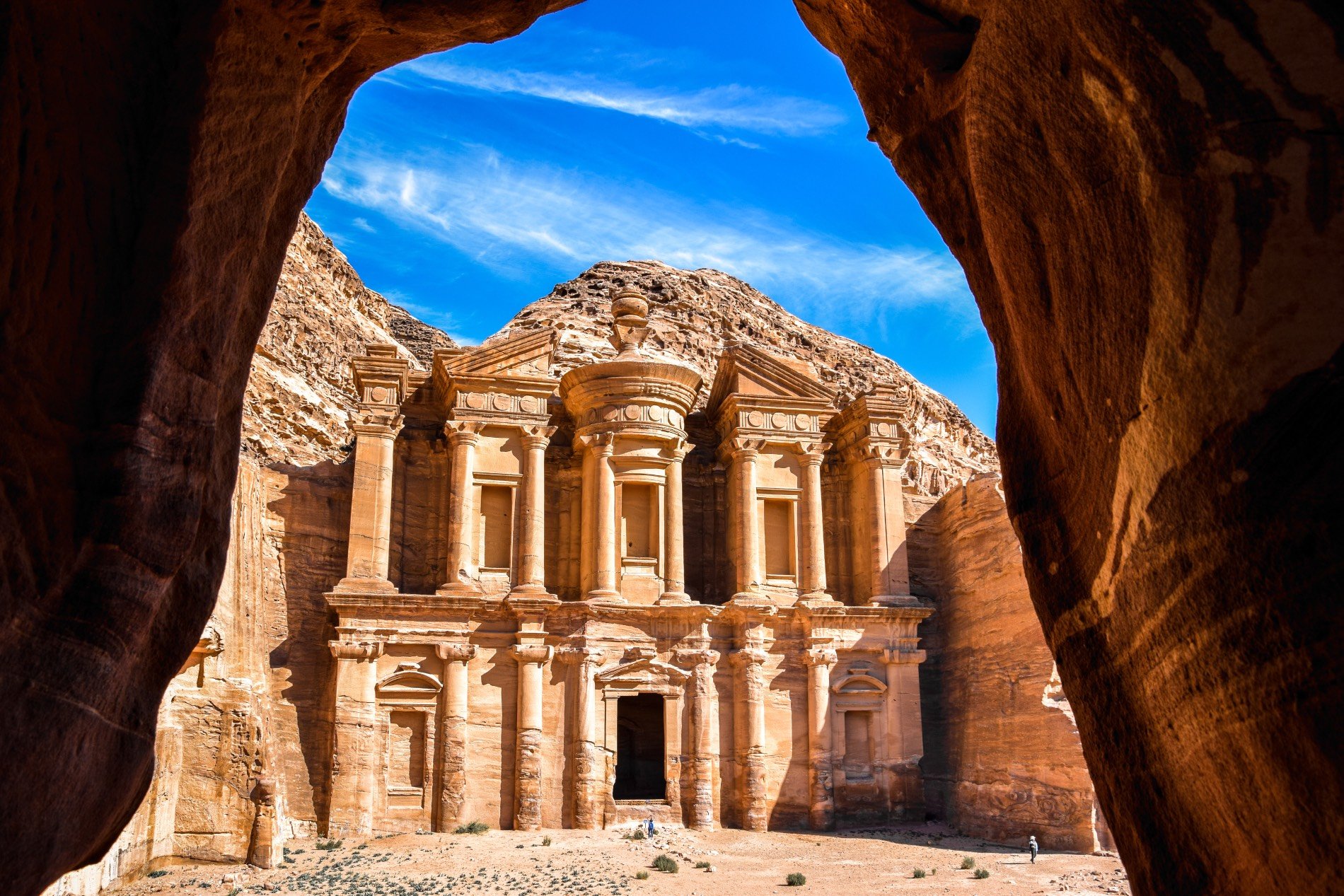
Nestled within Jordan lies a mesmerizing cave city that attracts visitors globally. Known as the "rose-red city," Petra serves as an entrance to a lost civilization, highlighting human innovation amidst challenging desert environments.
Established nearly 2,800 years ago by the Nabateans (an ancient Arab people who inhabited the northwest part of the Arabian Peninsula), this impressive city carved directly into the stone utilized its advantageous location to emerge as a key center for ancient commerce.
An open-air museum
This famous archaeological site In Jordan’s desert stood the capital city of the Nabataean kingdom around 300 BC. This ancient site is accessed through a slender canyon featuring tombs and temples hewn from the pink sandstone cliffs.
Overlooked but brought back to light in 1812 through the efforts of Swiss explorer Johann Ludwig Burckhardt, Petra has continually captivated both archaeologists and travelers ever since. Among its many attractions, the Khazneh stands out; this awe-inspiring structure, often referred to as "the Treasury," appears to emerge from the rock face soaring upwards to a remarkable height of 45 meters. This edifice not only holds the title of being Petra’s most renowned sanctuary but also symbolizes the essence of the city itself. However, beyond just the Khazneh, Petra boasts numerous other marvels such as the lofty Monastery, the intricate Siq which acts like a grand passageway leading visitors deep into the heart of the ancient metropolis, the well-preserved Roman theater with space enough for approximately 4,000 audience members, along with the formidable Royal Tombs.
Petra is far more than merely an open-air museum It stands as evidence of a civilization that mastered the art of controlling the desert. The Nabateans created an intricate water management system using pipelines and reservoirs, allowing them to thrive when others might have succumbed to scarcity.

The true standout in "Indiana Jones" is Petra.
In 1989, Steven Spielberg chose the 2,000-year-old city as the backdrop for his hit film. Indiana Jones and the Final Quest Petra's Treasury, sculpted from the rose-colored stone, transformed into the mythical sanctuary of the Holy Grail. This allure swiftly drew crowds who come eager to trace the path walked by Harrison Ford. As they traverse the Siq—the slender passage leading up to the Treasury—they do so with an air of excitement shimmering in their gaze. Regardless of the fact that the Holy Grail was never actually concealed within these walls, visitors find themselves immersed in a fantasy where dreams blur the lines between what is real and imagined, lending their quest a magical quality.
Even now, more than 35 years since the film came out, the shadow of Indiana Jones The memory of Petra still lingers. Tourism guides consistently bring up the film, demonstrating how movies have the power to boost travel destinations at times. This unexpected boon has revitalized a city that was once overlooked for generations, elevating it to stardom in the world of cinema.

Our website uses cookies to improve your experience. Learn more